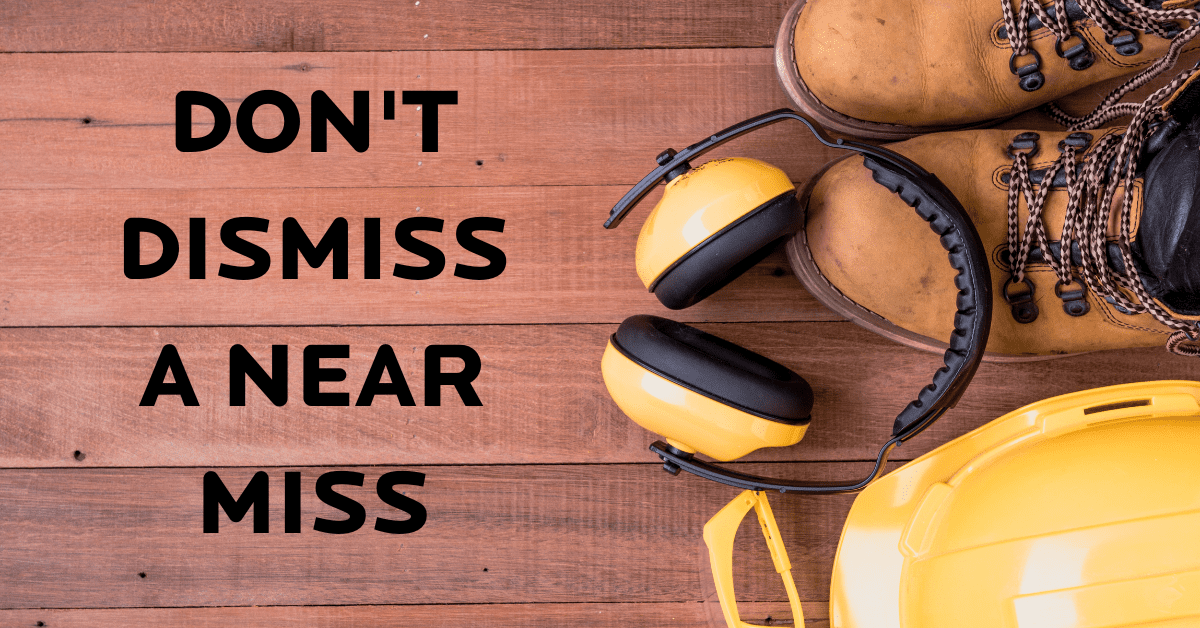
Everyone has had a close call at one time or another. While it’s a relief when no property is damaged and no personal injuries occur, if you and your team don’t take the time to analyze these events, the factors that contributed to a close call are like to recur. The next time, it could result in a serious accident leading to the injury of a crew member.
According to the National Safety Council, 75 percent of accidents are preceded by one or more close calls. Some common close call incidents include flying debris, operating commercial mowers on steep or slippery surfaces or falls from work vehicles and trailers.
While flying debris could narrowly miss a person, permanent injury to an eye could trigger a workplace inspection that may result in a citation and fines.
“It is also important to wear work clothing that protects other parts of the body from flying debris, such as long-sleeved shirts and long work pants,” says Sam Steel, NALP’s safety advisor. “Eye protection should meet ANSI Standard Z87.1 to provide impact resistance to flying debris. Generic sunglasses do not generally meet the worksite safety requirements!”
Operating mowers on sliding or steep slopes can become unstable and overturn. Operators should know the safe slope angles and operate with rollover protection (ROPS) in the up and locked position.
A close call with vehicles can occur when a worker mounts or dismounts in an unsafe manner, such as jumping from a truck bed or trailer or entering/exiting a skid steer without using the handhold and foot treads.
“Back, hip, and knee injuries are common when these types of injuries go beyond the close call stage,” Steel says. “Proper fall injury prevention and demonstration training will help prevent close calls moving to the injury and ‘days away from work’ stage.”
Close calls are more frequent when new work sites are added, new work methods are adopted, when new equipment is implemented and when safety training is not effectively mitigating close call incidents.
Encourage Reporting
If nothing is damaged and no one is hurt, your crew members may not see the need to report a close call. They also may not report anything out of fear of disciplinary action.
“Reduce the feeling among crew members that a close call is a reflection on their unsafe workplace behavior,” Steel says. “If the firm creates a non-threatening environment that reporting close calls is a good thing and will not result in disciplinary action, it will most likely result in a reduction of close calls becoming injury incidents. Companies that have a written policy and system for reporting close calls have a typically more friendly and positive employee-management relationship.”
Your employees should feel comfortable discussing close call incidents in committee meetings and making recommendations on prevention strategies. Steel says that verified and documented clusters of close call incidents of similar nature can indicate a need for more targeted safety training.
“An example would be flying debris close calls that are often the result of employees not wearing their assigned personal protective equipment (PPE),” he says.
If you are experiencing a lack of close call reports, examine if you have a threatening atmosphere of blaming employees for close calls.
“Reduce the threat by establishing an incentive for well documented close calls and encourage employees to make suggestions for correcting the hazardous conditions,” Steel says.
Analyzing Incidents
Steel advises that someone within the firm should monitor close call incidents and prioritize their severity and frequency. They should serve on active safety committees and provide a direct link to senior management.
It is important for company ownership/management to act quickly when becoming aware of workplace hazards identified in close call incident reporting to reduce worker hazard exposures changes in work practices and through proactive and dedicated safety training,” he says.
When analyzing these events, it’s important to identify the root cause rather than blaming a single employee. Conduct hazard audits to determine site hazards like slopes and drop-offs that may result in close calls when crews are at the worksite. Another possible cause of close calls is unsafe or improperly maintained equipment or machinery.
To establish an effective close call system, record and monitor close calls. Prioritize the close calls that are notable for their frequency and conduct immediate training on the hazards causing the close calls. Do not wait for these close calls to become injury or illness incidents.

